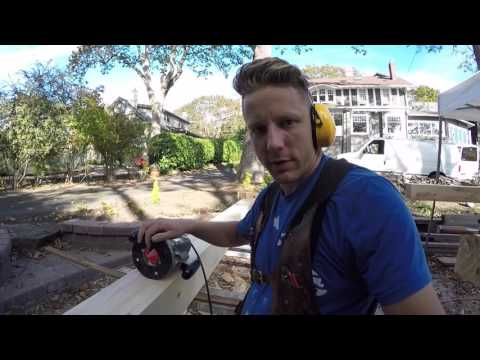Decking the field and delegating responsibility
In the first part of this series, we talked about snapping a line to get the first course of roof deck off to a good start.
In this episode, we fill up the rest of the roof and talk about workflow. First, it makes sense to work off the pile of sheathing wherever the truck puts it, so make sure the truck puts it where you want it: somewhere you can cut sheets and pass them up so that carpenters can put it on the line and nail it.
As you move to higher sections of roof, it makes sense to move the cut station higher in the house so that you can pass sheets between the rafters.
If you are working with 16 inches on center framing, you do not usually need H-clips. If you are framing with trusses, which often use 24-inch layout H-clips are needed to reduce the sagging potential of roof sheathing. One of the drawbacks of H-clips is that they fall out as you wrestle sheets in place. This means that you will have to struggle to replace an H clip with one hand while steadying a sheet with the other.
![]()
Better production comes from predictable movements
The workflow is similar to any team task: no one should ever really be waiting for someone else, there is always a step forward that can be taken. For example, when one sheet has the first few anchor nails in it, the first person moves ahead to measure the next sheet, while the other carpenter on the roof is nailing off the previous panel. Julio calls the numbers down to his cut person, and the next sheet is cut by while the two on the roof prepare for the next panel.
Of course, there is overlap. Sometimes the nailer needs to help measure, or if you’re working alone, you have to pull numbers while nailing off the sheets. In general, each person anticipates what the next one is doing now and will need next.
When the cut person finishes passing a sheet up, the measuring person should have numbers ready. If not, they should be the first thing done after nailing the panel in place.
The nailer should never run out of nails, which would stop everyone. The ground person can shuttle nails along with panels, so there are no excuses.
If the measurement person does not have numbers for the cut person, then two people wait for the panel to be measured.
For the top strip, get a number to the ground person as soon as possible, because they will need to rip a lot of sheets and work to stay ahead of the workflow.
Safety tip: sawdust is slippery
Even if you despise the people you work with, get rid of the sawdust from the sheets you cut and pass up to the roof. This is usually done by whacking the back of the sheet with a hammer after you cut it, and as you are picking it up.
Otherwise, use a broom or a blower on the roof.
If you do not believe that sawdust is slippery, try stepping on it on roof sheathing—but make sure you have fall protection (it is slippery).
—Shot on the jobsite of Mac Construction, we'd like to thank Julio Ortiz, the framing contractor, and Steven McCready, the builder, for helping us with this series of videos in New Orleans, LA











